Flood Defence
When complete in 2026/ 2027, the project will help protect communities from the increased risk of flooding from climate change and rising sea levels. Flood risk will be reduced for at least 60 years.
Reducing flood risk to homes and businesses
We are building 17km of improved flood defences from Lamplighter’s Marsh in the south to Aust in the north.
Within Avonmouth Severnside there are areas at risk of tidal flooding and some areas at risk of fluvial (river) flooding. There are some existing defences, but these do not provide consistent levels of protection.
The new flood defences will reduce flood risk to 2,500 homes and businesses, in particular around Avonmouth Village and Chittening in Bristol and the Severn Beach area in South Gloucestershire, including the railway line, New Passage, Pilning and Marsh Common.
The new flood defences will also create improved walking routes, making it easier for everyone to enjoy nature and the spectacular views of the Severn Estuary
Watch our flythrough video showing what flood defences between Aust Wharf Road and to south of Severn Beach will look like when complete.
How we build flood defences
Given the scale of the ASEA project, we need to use a combination of different types of flood defence structure to help protect communities and businesses around the Severn Estuary.
Earth embankments
Earth embankments make up around half of the total flood defences. We are using earth embankments to reduce the risk to communities from flooding. In some areas we are raising existing earth embankments. These will help protect residents and businesses while respecting the existing environment and reducing our carbon footprint. This method needs a much larger working area so is not suitable in all locations.
Earth embankments offer a number of benefits that include:
- Reuses existing materials available onsite from the works at Hallen Marsh and Northwick wetlands
- Minimises disruption for local residents and the environment by reducing the amount of material we need to import to site
Precast units
In parts of the project area, including Severn Beach North and South, we are using precast concrete units to form the new flood barriers. Thames Valley Construction produces and builds these units off-site in Newport, Wales. They are then transported directly to site and lowered into position.
This method minimises disruption for local residents and the environment, compared with pouring the concrete directly on site. Its benefits include:
- Quicker construction
- Fewer staff needed onsite
- Safer
- Fewer deliveries
- Less noise and ground vibration.
We expect to install a total of around two kilometres of precast concrete units by the time we complete the works.
Sheet pile walls
We will use sheet piles to form the flood defence wall in some areas. Sheet piles are steel sheets that we directly drive deep into the ground, until we reach rock or firm ground. We use these in areas with very limited space; where there is not enough room to build earth embankments. We can only use sheet piles where we know there is little risk of finding obstructions in the ground.
The benefits of sheet pile walls include:
- Greater protection against coastal ‘toe’ erosion, compared with concrete walls, as they are driven deeper into the ground (the ‘toe’ is the horizontal base of a concrete wall)
- Quicker to install compared with in situ concrete walls that are poured on site
- Can be used where space is limited
- Potentially can be installed without the need to remove existing flood defences, thereby avoiding the need for temporary bunds while we work
- Easy removal in the event of future development or works
- Less impact on buried services, compared with reinforced concrete walls.
Glass panels
We are using glass panels in the flood defence walls at New Passage. As with the precast concrete units, these glass panels are manufactured off-site and delivered directly to us when and where we need them.
These flood defence walls incorporate a series of individual glass panels installed using a glass vacuum lifter (which looks like a very large magnet) and lifting device, such as a telehandler, digger or crane. The panels can be replaced individually which is of real benefit if one were to be damaged. In this situation, a temporary structure could be put in place while the glass panel was repaired or a new one made.
When pouring the concrete foundations for this section of the defences, we place stainless steel anchor plates into the concrete, ready to bolt on the glass panels. After the foundations have cured, the manufacturers install the glass panels without needing to drill into the newly cast concrete.
These barriers offer the same protection as the other flood defences while also retaining visibility; allowing residents and visitors to continue to enjoy the breathtaking views of the Severn Estuary and beyond.
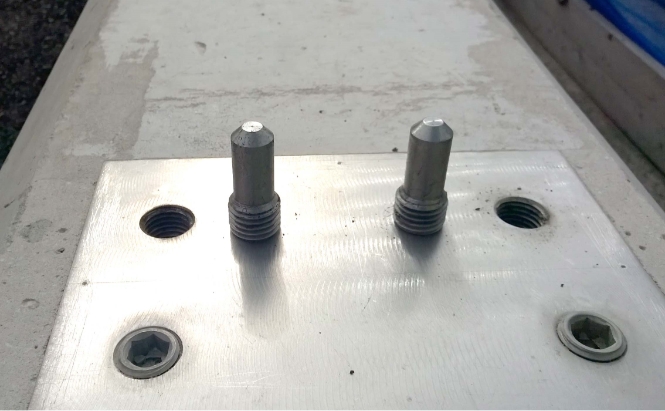
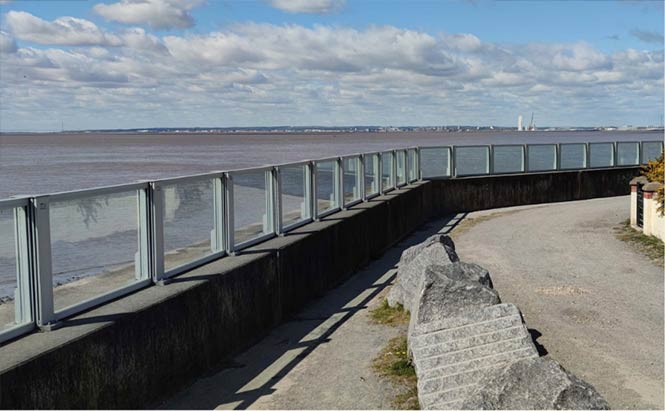
Outfalls
There are a number of existing outfalls throughout the project area. We need to raise the height of the outfalls, in-line with the new flood defences. In many cases, in order to support the increased height, we need to widen the outfalls, to support the extra load.
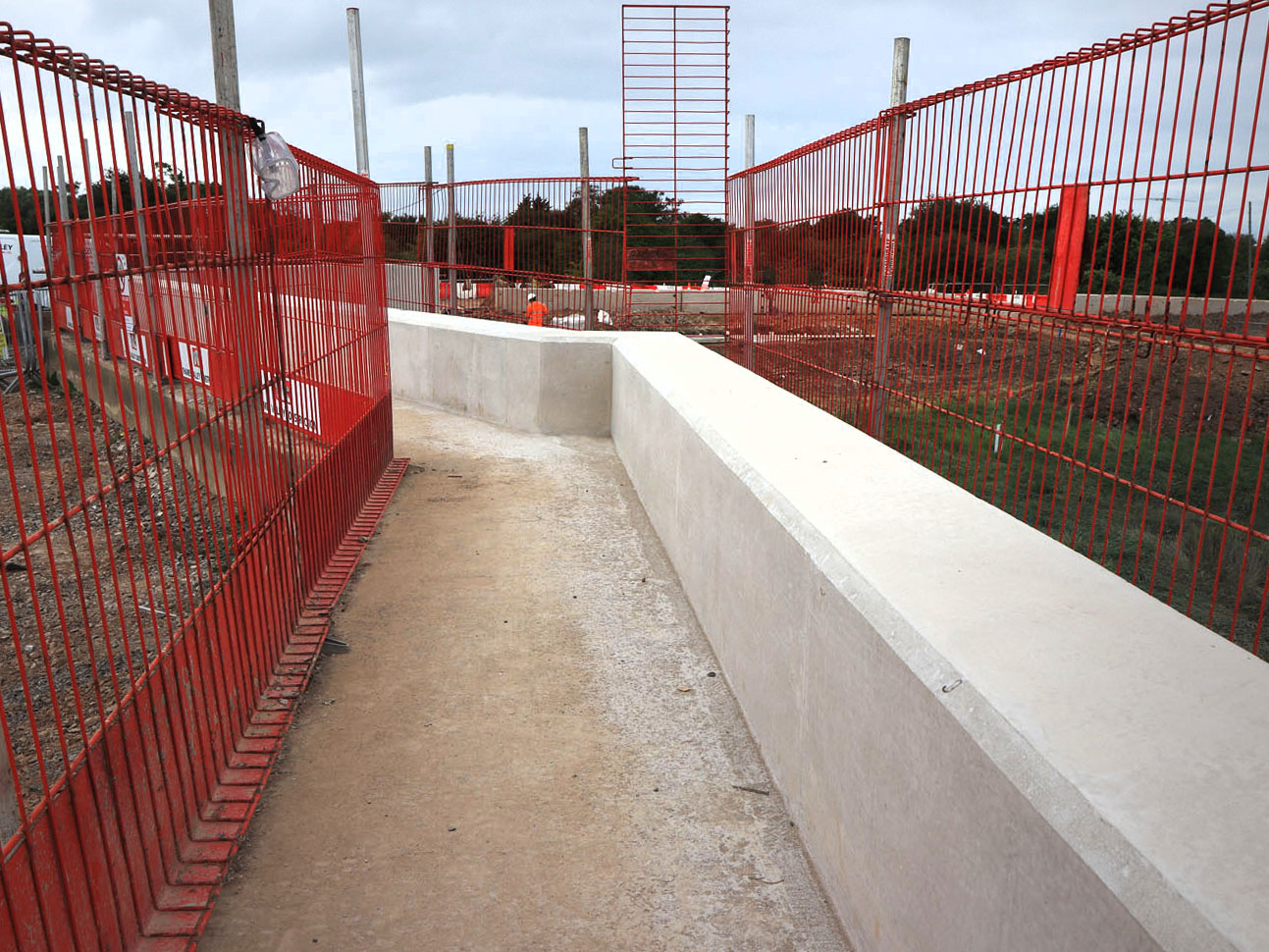
The height of the existing structure has been raised – September 2021
Cutting-edge technology
At Chestle Pill Outfall, the existing outfall structure would not have supported the additional load from the increased height. To overcome this, we looked at ways of reducing the weight of the existing earth over the outfall. We identified the best way to do this was to replace some of the existing earth over the structure with lightweight high strength modular cells (that look like milk crates, see below). This network of cells has a 95% void ratio – being much lighter in weight than the ground they will replace but still robust enough to support the same load. It is also recyclable at the end of its service life.
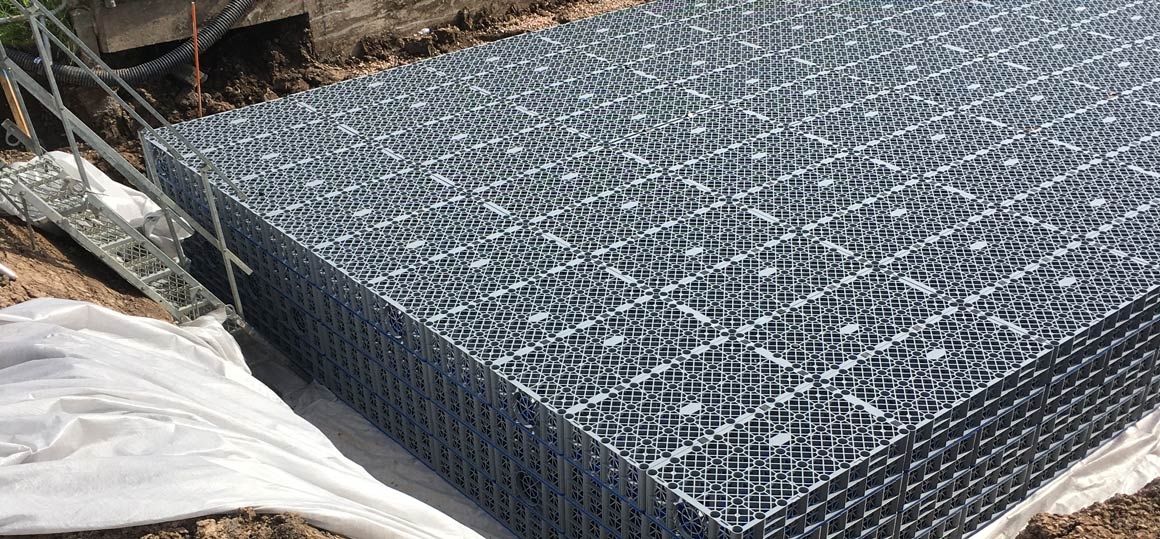
Road ramp and flood gates
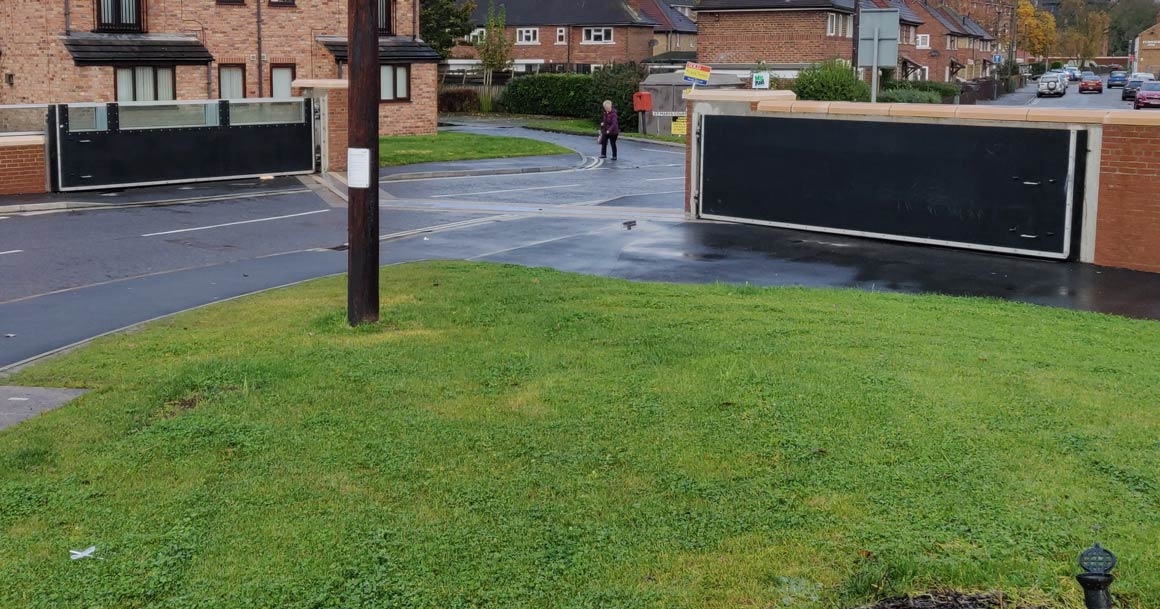
Watch this short interview with Emma Baker - Environment Agency, Area Director Wessex
This project will protect not only present but future generations from the increasing risk of flooding as a result of climate change. It’s really exciting to see such progress. The Severn Estuary is internationally important for its habitats for birds and over 80 hectares of wetlands will provide safe roosts for the wintering birds during high tides on the estuary.
Environment Agency, Area Director Wessex
